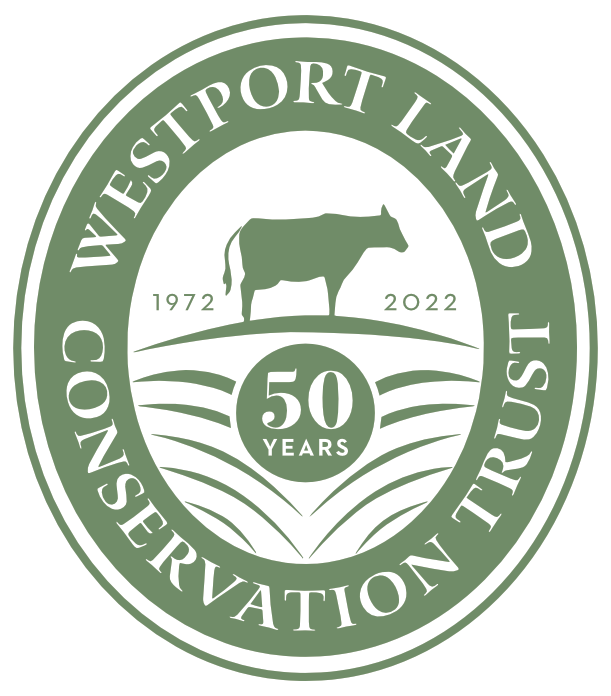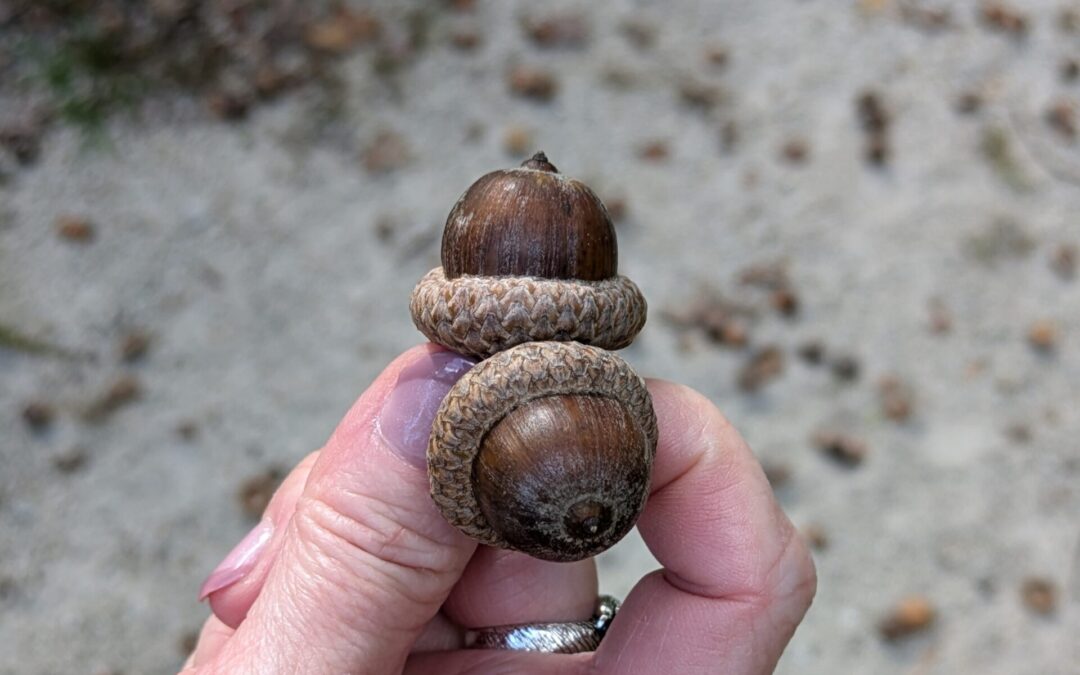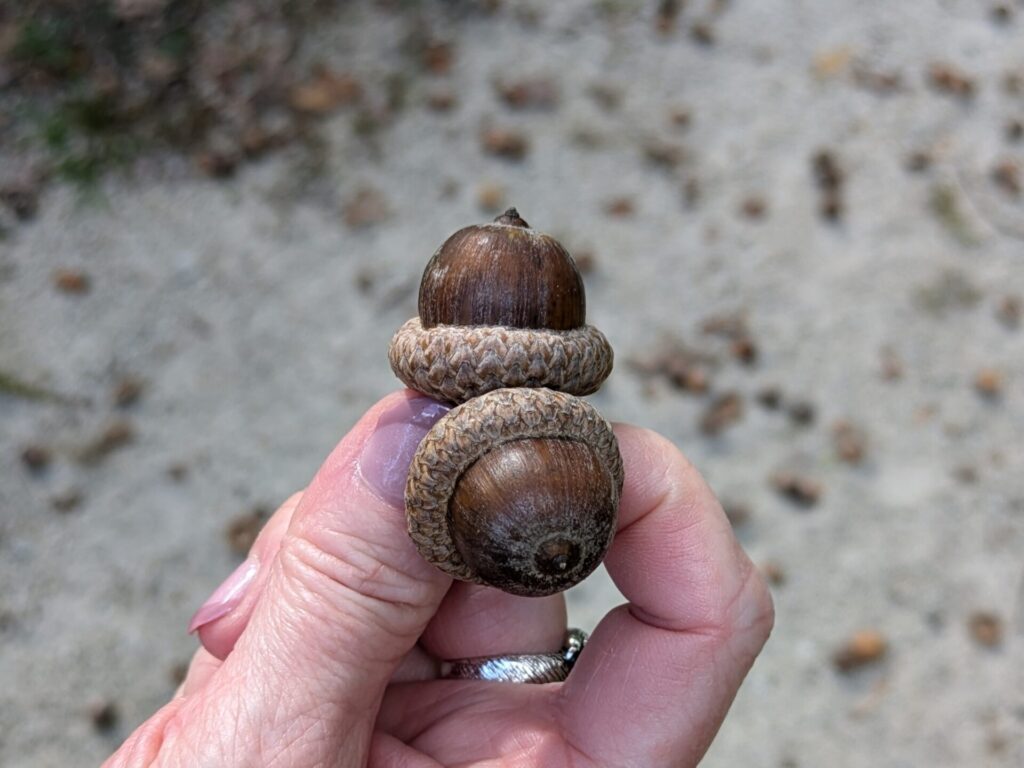
A great year for acorns!
Different species have different “mast” years. 2024 is the year of the acorn and that’s a great thing for our area. Oak trees are vital to our natural world–they shelter and feed literally thousands of insects, birds, animals, and fungi in over 500 species worldwide.
Here in Westport, our local oaks feed white-tailed deer (over 75% of their fall diet consists of acorns), wild turkeys, black bears, wood ducks, ruffed grouse, blue jays, gray and flying squirrels, mice, and voles. That’s in addition to the over 500 species of moth and butterfly caterpillars that munch on their leaves (caterpillars which then become food for breeding birds) and oak gall wasps!
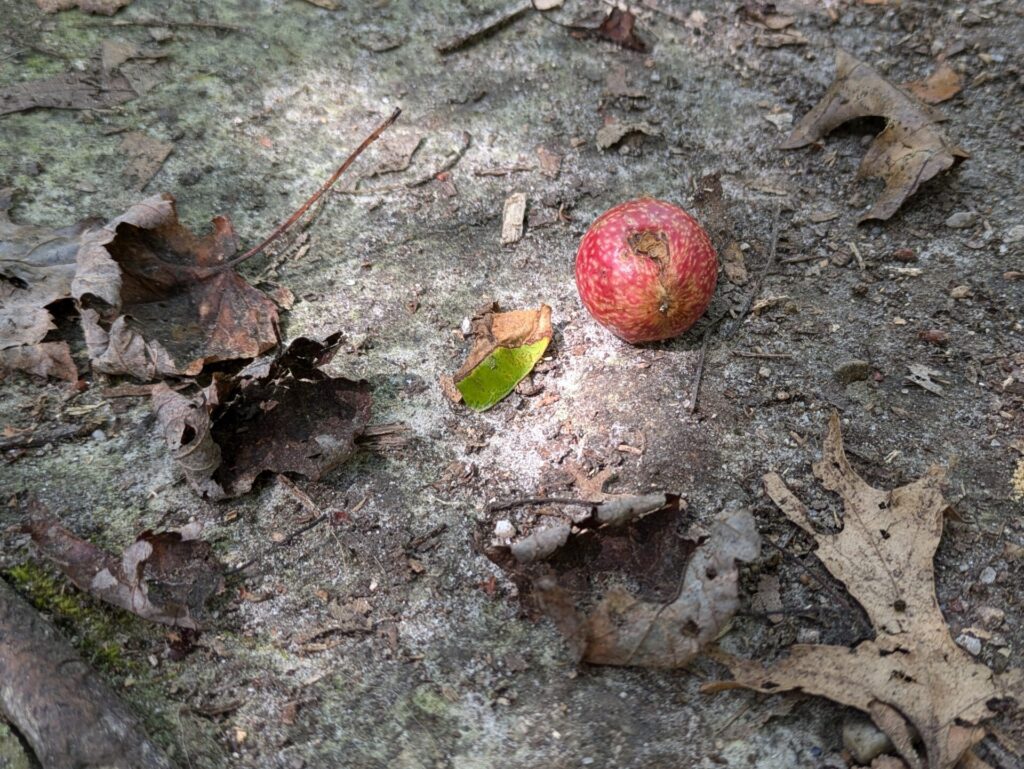
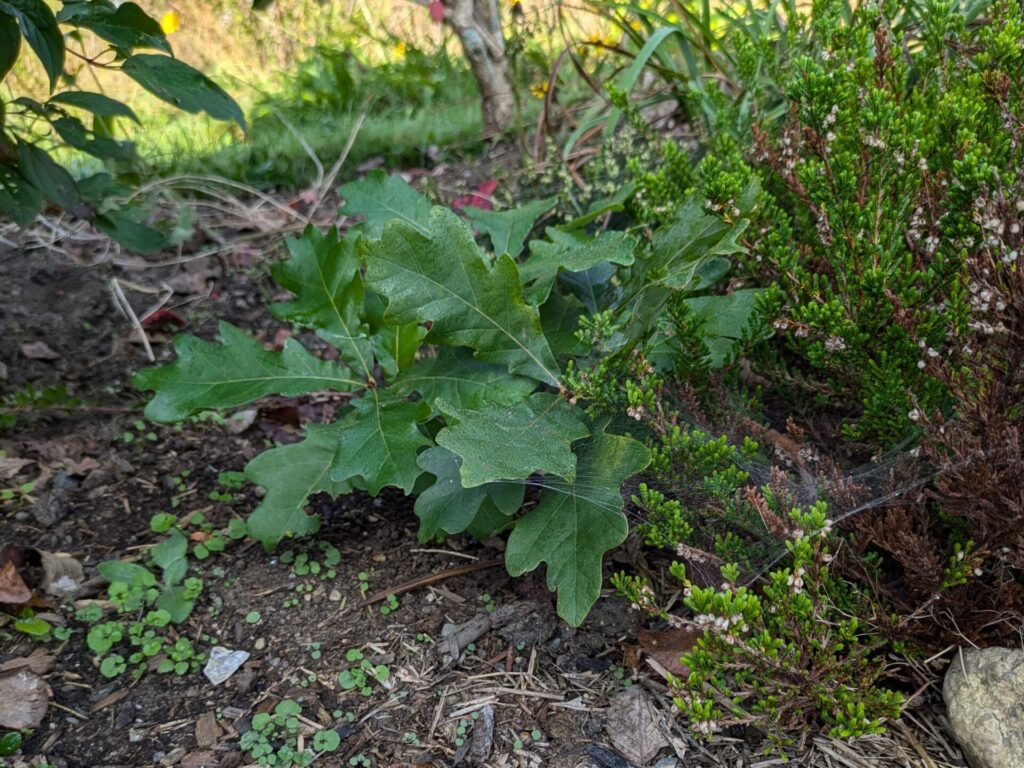
Oaks are vital to nature’s food web
Oaks are so meaningful to our habitat, why not try to grow your own!
Thanks to the Little Compton Garden Club & Garden Club of Buzzards Bay for this straightforward explanation of how to do it.
- Go for a walk and collect lots of freshly fallen acorns from healthy trees in early-to-mid autumn
- Dump your acorns in a large bowl of water and wait a few hours. Discard any acorns that float–they’re not going to grow.
- Plant the acorns right away in pots that have drainage holes and are deep enough for your oak’s eventual roots, a 3″ pot works well.
- Fill pots with peat-based potting mix and plant 1 or 2 acorns sideways about 1″ deep. Water well.
- Put pots in a protected area outside (they need the cold!) and don’t let them dry out; keep weed-free. Protect acorns and seedlings from animals with a mesh screen or cage that will allow for growth.
- If your acorns sprout, congratulations! When they’re 5-6″ tall, you’ll need to transplant them to a larger pot with bigger drainage holes. Use a 50/50 mix of potting soil and local soil. Add 1 tsp of slow-release, organic fertilizer.
- Relocate your baby oaks to their permanent site when the root system starts to outgrow the container. Dig a hole 3x the width of the pot and plant the oak at the same depth. Add organic matter (compost) and mulch a wide band around the tree, keeping mulch away from the trunk. Water well for the first year! Protect your little trees from hungry critters with cages for several years.
Click on the image below or on this link for the entire Oak Growing brochure from the Little Compton Garden Club and Garden Club of Buzzards Bay. They’ve included brief descriptions of our two most common oaks and suggestions for where to plant.
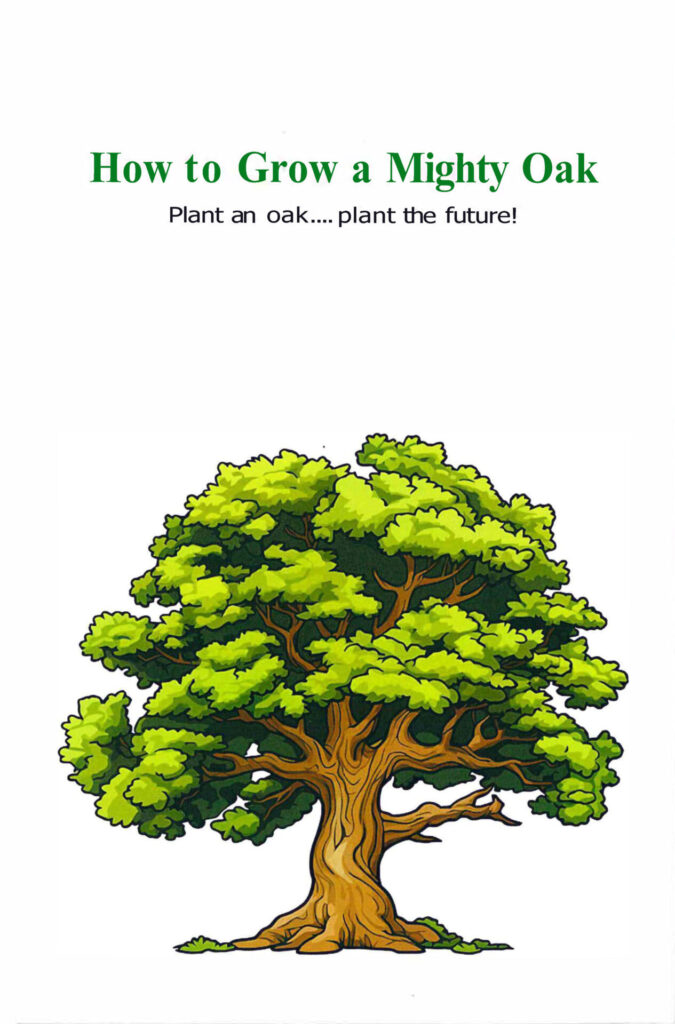
More about oak conservation from MassWildlife
For a different method of acorn planting, this is an excellent article on growing oaks and winter sowing acorns from the Providence Journal

